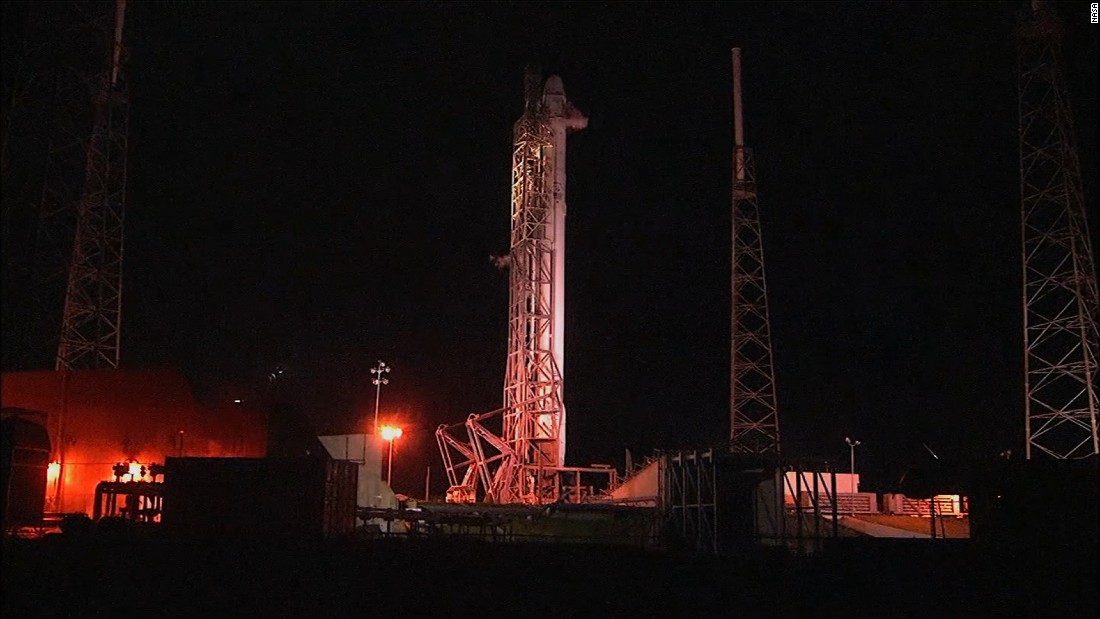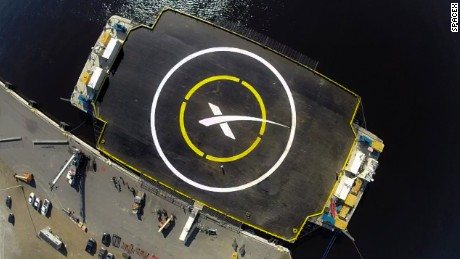Pioneering SpaceX rocket launch aborted
 (CNN)Private
spaceflight company SpaceX scrubbed a scheduled rocket launch Tuesday,
in which it planned to attempt the pioneering step of landing the
rocket's first stage on a floating platform.
(CNN)Private
spaceflight company SpaceX scrubbed a scheduled rocket launch Tuesday,
in which it planned to attempt the pioneering step of landing the
rocket's first stage on a floating platform.
The next possible launch attempt is at 5:09 a.m. ET Friday, NASA said via Twitter, "pending resolution of the issue."
NASA and SpaceX said the problem was with the Falcon 9 rocket's second stage, rather than the section it plans to try to land.
"During the terminal count
engineers observed drift on one of the two thrust vector actuators on
the second stage that would likely have caused an automatic abort.
Engineers called a hold in order to take a closer look," said John
Taylor, of SpaceX communications.
The
thrust vector control actuators are used to steer the rocket in flight.
The second stage of the rocket delivers the payload -- in this case,
supplies for the International Space Station -- to the desired orbit.
SpaceX's
attempt to land the Falcon 9 rocket's first stage has been the chief
focus of interest ahead of its latest resupply mission.
Recycling rockets
Traditionally,
rockets have been designed to fall back to Earth after separating from
the spacecraft they lifted, and then burn up on re-entry or crash into
the ocean. The millions of dollars that go into the production of the
rockets burn, too.
SpaceX wants to pioneer a reusable rocket, a development that could change the economics of space travel.
"A
fully and rapidly reusable rocket -- which has never been done before
-- is the pivotal breakthrough needed to substantially reduce the cost
of space access," SpaceX said in a statement.
The
company has twice attempted soft landings of the Falcon 9's first stage
on water. Those tests showed that the rocket is capable of reducing its
speed from hypersonic to nearly zero, and deploy landing legs.
In
those tests, the rocket tipped sideways and crashed into the ocean,
causing damage that made the rocket unusable. That was according to
plan, SpaceX said.

'X' marks the spot for the Falcon 9 landing site.
Landing on a moving target
When
the launch happens, the company will try the same soft landing for the
Falcon 9's first stage, but this time on a custom-built floating
platform it calls the autonomous spaceport drone ship.
Landing on the platform "is significantly more challenging" than the water landings, the company said.
For
one, the platform is not anchored, and while it looks large from the
ground, it is a rather small target for the 14-story-tall rocket.
SpaceX described reentry and landing as "trying to balance a rubber broomstick on your hand in the middle of a wind storm."
The
company puts the odds of success at 50% at best. It adds, however, that
this is just the first of a number of tests toward the goal of landing a
rocket stage for reuse.
As for the
target, "X" marks the spot: The company will try to land the rocket
stage on the SpaceX logo painted on the center of the floating platform.
Keith
Smith, of Britain's Royal Astronomical Society, told CNN the reason for
using the platform -- despite the complications of landing on a moving
target -- was that it should prevent any properties on Earth being
damaged if the landing goes wrong.
It's
not unusual for a launch to be aborted, he said, since there are so
many elements at play. "The payload on this is so expensive to launch
that you don't want to risk anything about it," he said.
The timing of the next launch attempt will depend on how serious the problem is, he said.
Source: cnn.com, re-posted by Abdulgafar Esho (www.econsforumnews.blogspot.com)










0 comments:
Post a Comment